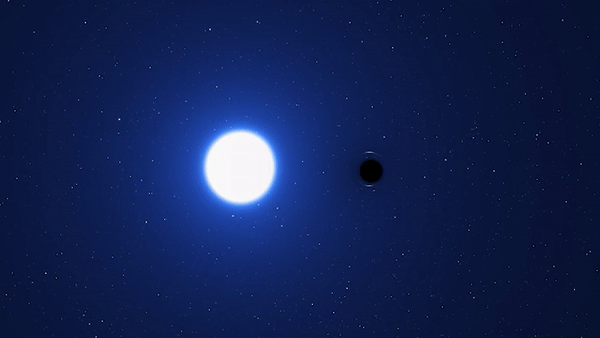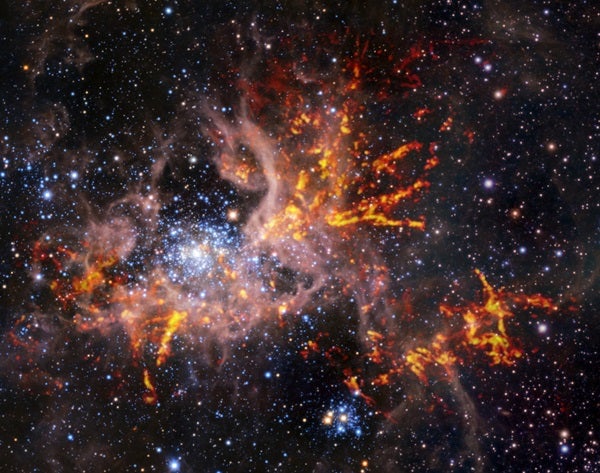For six years, astronomers scoured the Tarantula Nebula searching for the most elusive prey: a dormant black hole.
Despite being massive objects, stellar-mass black holes can be incredibly difficult to spot because — as their name suggests — they don’t radiate light. Instead, scientists must rely on indirect observations, looking for how nearby matter behaves to infer their presence. The easiest method is to look for the high levels of X-ray radiation produced by the material the black hole is gorging itself on, called an accretion disk.
Researchers suspect that billions of stellar-mass black holes reside in our Local Group of galaxies — 100 million of which are estimated to be in the Milky Way alone — a far greater amount than the number of currently known black holes. If most of those stellar-mass black holes are X-ray quiet, meaning they don’t have an accretion disk emitting light, they would be incredibly difficult to spot.
Which is why, when a team of international experts known for refuting black hole discoveries stumbled upon a dormant black hole, they almost couldn’t believe it.
“We identified a ‘needle in a haystack’,” said study leader Tomer Shenar in a press release. “For the first time, our team got together to report on a black hole discovery, instead of rejecting one.” Their findings were published July 18 in Nature Astronomy.
No fireworks for this monster
To find this dormant black hole, the team looked at almost 1,000 massive stars in the Tarantula Nebula inside the Large Magellanic Cloud, hoping that at least one of those stars were in a binary with their real target, a black hole.
But when they located a candidate in the system VFTS 243, they were initially skeptical. Co-author Kareem El-Badry, whom Shenar refers to as the “black hole destroyer,” said “I had my doubts. But I could not find a plausible explanation for the data that did not involve a black hole.”
This black hole is around 9 times the mass of the Sun and circles a 25-solar-mass blue giant star. And strangely, the researchers could find no evidence of a supernova remnant.
When massive stars reach the end of their lives, it’s believed that their core collapses — into either a neutron star or a black hole — and their outer layers are expelled in a supernova explosion. At least that’s how physicists have typically understood it. But known black holes have been rarely paired with supernova remnants.
This black hole seems to be following that trend. “The star that formed the black hole in VFTS 243 appears to have collapsed entirely, with no sign of a previous explosion,” said Shenar. This scenario is known as a direct collapse. Essentially, the progenitor star is so massive that its core collapses immediately into a black hole, preventing a supernova blast.
“Evidence for this ‘direct-collapse’ scenario has been emerging recently,” explained Shenar. “But our study arguably provides one of the most direct indications.”
According to the team, this finding not only “substantially impacts” the direct collapse scenario, but also has important implications for gravitational-wave researchers. Hundreds of X-ray quiet binaries are suspected to be hiding in the Milky Way and the Magellanic Clouds, and VFTS 243 is the first “unambiguous discovery” of such a system. Finding even more of these systems would have strong implications for the rate of black hole mergers scientists can expect to see.
“Of course I expect others in the field to pore over our analysis carefully, and to try to cook up alternative models,” said El-Badry. “It’s a very exciting project to be involved in.”











